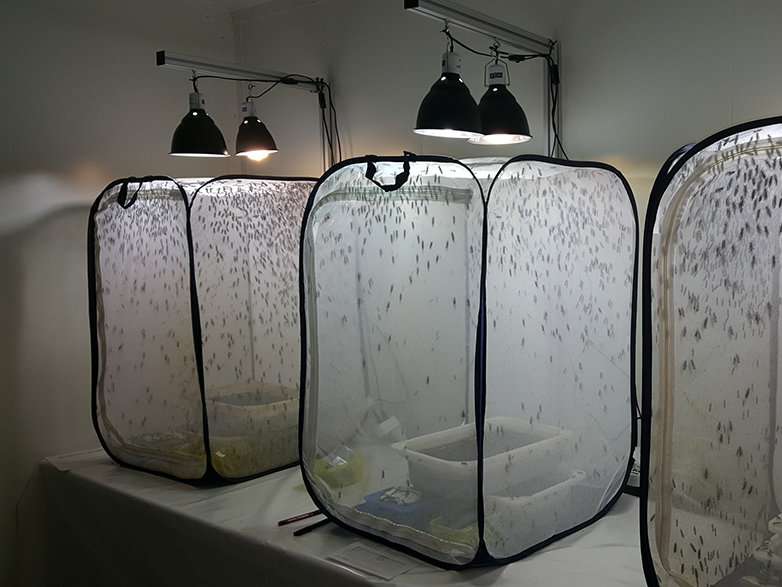Address
Chapel en le Frith, High Peak, Derbyshire
Work Hours
Monday to Friday: 9AM - 7PM
Weekend: 10AM - 5PM


Building a Small Black Soldier Fly Farm: part 4
Constructing a small-scale black soldier fly (BSF) farm is a relatively straightforward process that requires minimal materials and space. Here’s a step-by-step guide on how to build your own BSF farm using common household items:
Materials Needed:
Instructions:
1. Select a Container:
Choose a plastic tub or container with dimensions suitable for your available space and intended larvae production capacity. A container with a lid is preferable to regulate moisture and control odors.
2. Prepare Drainage System:
Drill or cut holes in the bottom of the container to create drainage holes. Insert PVC pipes or drainage tubes vertically into the container to facilitate airflow and drainage. Ensure the pipes extend above the compost layer to prevent larvae from escaping.
3. Add Compost and Organic Waste:
Place a layer of compost or organic waste at the bottom of the container. This serves as the substrate for the black soldier fly larvae to feed on. You can use a variety of organic materials such as fruit and vegetable scraps, coffee grounds, or leftover grains.
4. Introduce Decaying Vegetation (Optional):
Adding decaying vegetation, such as leaf litter or grass clippings, can attract adult black soldier flies to lay their eggs. Scatter a thin layer of decaying vegetation on top of the compost layer to create an attractive environment for egg laying.
5. Install Lid and Ventilation:
Secure the lid onto the container to regulate moisture levels and prevent pests from entering. If desired, drill small ventilation holes in the lid or sides of the container to facilitate airflow and prevent overheating.
6. Monitor and Maintain:
Regularly monitor the moisture levels and temperature within the BSF farm to ensure optimal conditions for larvae development. Keep the compost layer moist but not waterlogged, and avoid excessive heat or direct sunlight exposure.
7. Harvesting Larvae:
As the black soldier fly larvae mature, they will naturally migrate away from the compost substrate towards the edges of the container. Periodically check the container for mature larvae and harvest them for use as animal feed or composting.
8. Optional: Screen or Mesh Cover (Optional):
To prevent adult black soldier flies from escaping while still allowing them to access the compost for egg laying, you can cover the container with a fine mesh or screen secured with a rubber band or clips.
By following these steps and maintaining proper conditions, you can easily build and manage a small black soldier fly farm to produce nutritious larvae for animal feed or composting purposes. Adjustments can be made based on available space, resources, and specific needs
Coming next: